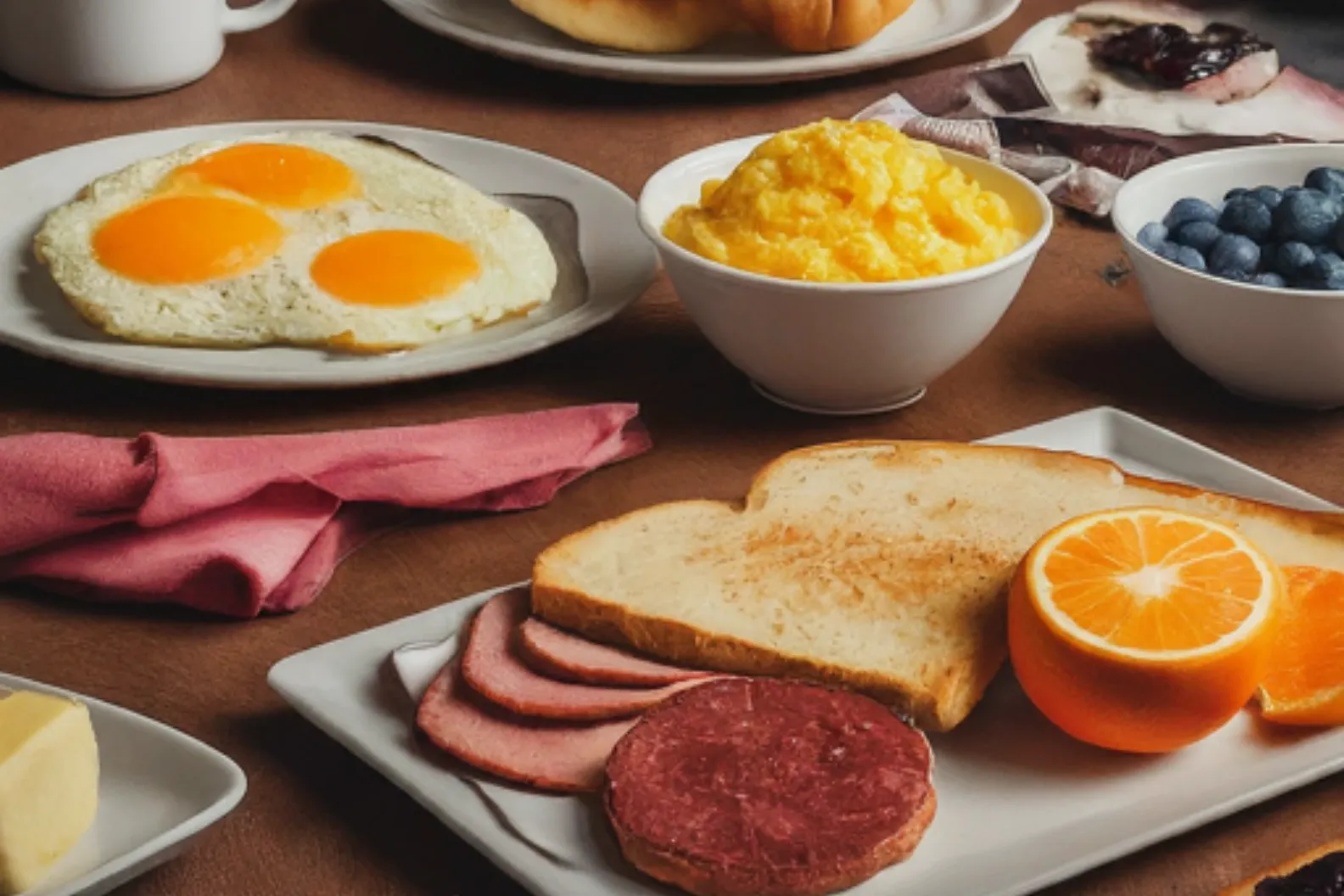Belly fat, also known as visceral fat, can be a stubborn foe in the battle for a flat tummy. While exercise is crucial, what you eat and when you eat can significantly impact your success. Intermittent fasting (IF) has emerged as a popular strategy for weight loss, and many wonder: which intermittent fasting window is best for shedding belly fat?
This article dives deep into the world of IF, exploring different fasting windows and their effectiveness in targeting belly fat. We’ll also unveil frequently asked questions to guide you on your fat-burning journey.
Table of Contents
ToggleUnderstanding Intermittent Fasting: A Cyclical Approach
Intermittent fasting is an eating pattern that cycles between periods of eating and fasting. It doesn’t dictate what you eat, but rather when you eat. This approach allows your body to switch from burning glucose (sugar from food) to burning stored fat for energy during the fasting window.
The Benefits of IF for Belly Fat Loss:
- Increased fat burning: During fasting, your body’s insulin levels decrease, signaling the release of stored fat for fuel.
- Improved metabolic health: IF may enhance insulin sensitivity, aiding in better blood sugar control.
- Reduced inflammation: Chronic inflammation is linked to belly fat accumulation. IF can potentially help decrease inflammation.
Unveiling the Contenders: Popular Intermittent Fasting Windows
There are several popular IF protocols, each with varying fasting durations. Let’s explore some common options:
1. The 16/8 Method:
- Fasting window: 16 hours
- Eating window: 8 hours
This is a widely adopted approach. You could fast from dinner (8 pm) to lunch the next day (12 pm) and consume all your calories within the remaining 8 hours.
2. The 5:2 Diet:
- Fasting days: 2 non-consecutive days
- Eating days: 5 regular eating days
Here, you restrict your calorie intake to 500-600 calories on two non-consecutive days, while eating normally on the remaining five days.
3. Eat Stop Eat (ESE):
- Fasting window: 24 hours (once or twice a week)
- Eating window: 24 hours (after the fasting period)
This method involves a 24-hour fast, once or twice a week. You can consume water, black coffee, or unsweetened tea during the fasting window.
4. Alternate Day Fasting (ADF):
- Fasting pattern: Fast one day, eat normally the next
This approach involves alternating days of fasting with regular eating days.
Choosing the Right Window: A Personalized Approach
There’s no single “best” window for everyone. The ideal choice depends on your preferences, lifestyle, and health conditions. Here’s a table summarizing the pros and cons of each method:
| Method | Pros | Cons |
|---|---|---|
| 16/8 | Sustainable, flexible eating window | May require initial adjustment |
| 5:2 Diet | Easier to follow a regular eating pattern on most days | Requires stricter calorie restriction on fasting days |
| Eat Stop Eat | Convenient for busy schedules | Can be challenging to manage a 24-hour fast |
| Alternate Day Fasting | May lead to quicker results | Requires strong discipline and can be restrictive |
Factors to Consider When Choosing Your Window:
- Your activity level: If you’re highly active, you might need a longer eating window to fuel your workouts.
- Your sleep schedule: Choose a window that aligns with your sleep patterns to avoid disrupting your circadian rhythm.
- Your health: Consult with a doctor before starting IF, especially if you have any underlying health conditions.
Frequently Asked Questions (FAQs) about Intermittent Fasting for Belly Fat Loss
- Will I lose muscle mass with IF? Studies suggest minimal muscle loss with IF, especially when combined with strength training and adequate protein intake.
- Can I drink coffee or tea during my fast? Yes, unsweetened black coffee, green tea, and water are all acceptable during fasting windows.
- What should I eat during my eating window? Focus on whole, unprocessed foods like fruits, vegetables, lean protein, and healthy fats. Prioritize nutrient-dense meals to ensure you meet your daily requirements.
- Is IF safe for everyone? While generally safe for healthy individuals, consult with a doctor before starting IF if you have conditions like diabetes, eating disorders, or are pregnant or breastfeeding.
- How long does it take to see results with IF? Weight loss results with IF can vary depending on factors like calorie intake, activity level, and genetics. Consistency is key for long-term success.
Optimizing Your Intermittent Fasting Journey for Belly Fat Loss
Now that you’ve explored different fasting windows and factors to consider, here are some practical tips to maximize your belly fat-burning success with IF:
- Prioritize a Healthy Diet: While IF focuses on “when” you eat, “what” you eat remains crucial. Fill your eating window with nutritious foods like fruits, vegetables, lean protein sources (chicken, fish, legumes), and healthy fats (avocados, nuts, seeds). Limit processed foods, sugary drinks, and unhealthy fats.
- Strength Training is Key: Don’t underestimate the power of exercise! Strength training helps build and maintain muscle mass, which boosts your metabolism and aids in belly fat burning. Aim for at least two to three strength training sessions per week.
- Stay Hydrated: Drinking plenty of water throughout the day is essential for overall health and can also aid in curbing hunger pangs during your fasting window.
- Listen to Your Body: Pay attention to your hunger cues. If you’re feeling overly hungry during your fasting window, it’s okay to adjust your schedule slightly. The goal is to find a sustainable approach.
- Plan Your Meals: Planning your meals helps you make healthy choices and avoid impulsive snacking during your eating window.
- Consider Supplements: Some people find that taking magnesium or electrolytes can help alleviate headaches or fatigue that might occur during the initial stages of IF. However, consult your doctor before starting any supplements.
- Track Your Progress: Monitoring your weight, body measurements, and how you feel can be motivating and help you stay accountable.
- Don’t Be Afraid to Experiment: There’s no one-size-fits-all approach. Experiment with different fasting windows and find what works best for you in terms of sustainability and results.
- Be Patient and Consistent: Remember, belly fat loss takes time and dedication. Consistency with your IF routine and healthy habits is key to achieving your goals.

Optimizing Intermittent Fasting for Belly Fat Loss
Intermittent fasting has gained popularity as a strategy for weight loss, including targeting stubborn belly fat. Here’s a closer look at how intermittent fasting can be utilized effectively for achieving a flat tummy:
What Times Should I Intermittent Fast for Belly Fat Loss?
The timing of your intermittent fasting window can vary based on personal preference and lifestyle. However, popular intermittent fasting methods include:
- 16/8 Method: This involves fasting for 16 hours each day and restricting eating to an 8-hour window, such as 12:00 PM to 8:00 PM.
- 5:2 Diet: This approach involves eating normally for five days of the week and restricting calorie intake to 500-600 calories on two non-consecutive days.
- Alternate-Day Fasting: With this method, you alternate between fasting days, where you consume minimal calories or fast entirely, and non-fasting days.
Choose a fasting schedule that aligns with your daily routine and allows you to adhere to the fasting period consistently.
Does Intermittent Fasting Work on Belly Fat?
Yes, intermittent fasting can be effective for reducing belly fat when combined with a healthy diet and regular exercise. Research suggests that intermittent fasting may help improve metabolic health, increase fat burning, and reduce overall calorie intake, all of which contribute to belly fat loss.
What is the Best Intermittent Fasting for a Flat Tummy?
There is no one-size-fits-all approach to intermittent fasting, and the best method for achieving a flat tummy may vary from person to person. Experiment with different fasting schedules to find what works best for you and supports your weight loss goals.
Does Your Stomach Shrink When You Do Intermittent Fasting?
Intermittent fasting may lead to a reduction in stomach size over time, as it can help regulate hunger hormones and promote feelings of fullness. However, the primary mechanism behind belly fat loss with fasting is likely related to changes in metabolism and fat metabolism rather than physical stomach shrinkage.
When Does the Body Start Burning Fat During Fasting?
The body typically starts burning fat for energy once glycogen stores are depleted, which occurs several hours into a fasted state. During this time, insulin levels decrease, and the body shifts from using glucose as its primary fuel source to utilizing stored fat for energy.
How to Lose Belly Fat in 2 Weeks?
While it’s unrealistic to expect significant belly fat loss in just two weeks, you can take steps to kick-start your weight loss journey and make progress toward a flatter tummy:
- Follow a Balanced Diet: Focus on whole, nutrient-dense foods such as fruits, vegetables, lean proteins, and whole grains while limiting processed foods and sugary beverages.
- Incorporate Exercise: Incorporate both cardiovascular exercise and strength training into your routine to burn calories, build muscle, and boost metabolism.
- Stay Hydrated: Drink plenty of water throughout the day to stay hydrated and support overall health and digestion.
- Get Adequate Sleep: Aim for 7-9 hours of quality sleep each night to support weight loss efforts and overall well-being.
- Manage Stress: Practice stress-reducing techniques such as meditation, deep breathing exercises, or yoga to minimize cortisol levels, which can contribute to belly fat accumulation.
Can I Get a Flat Tummy in 2 Weeks?
While significant changes in belly fat may not be achievable in just two weeks, you can take steps to reduce bloating, improve digestion, and kick-start your weight loss journey. Consistency with healthy eating, regular exercise, and lifestyle habits is key to achieving long-term results.
How to Burn Stomach Fat Quickly?
To burn stomach fat quickly, focus on creating a calorie deficit through a combination of diet, exercise, and lifestyle changes:
- Eat a Balanced Diet: Choose nutrient-dense foods that support weight loss, such as lean proteins, fruits, vegetables, and whole grains, while limiting processed foods and added sugars.
- Engage in Cardiovascular Exercise: Incorporate aerobic exercises such as walking, running, cycling, or swimming to burn calories and promote fat loss.
- Strength Train: Include strength training exercises to build lean muscle mass, which can increase metabolism and help burn more calories throughout the day.
- Stay Consistent: Consistency is key to achieving results, so stick to your healthy eating and exercise routine even when progress feels slow.
Can You Lose Belly Fat in 20 Days?
While significant belly fat loss may not be achievable in just 20 days, you can make progress toward a flatter tummy by adopting healthy habits and lifestyle changes. Focus on creating a sustainable plan that includes a balanced diet, regular exercise, and stress management techniques for long-term success.
In summary, while intermittent fasting can be a useful tool for promoting belly fat loss, it should be combined with a balanced diet, regular exercise, and other healthy lifestyle habits for optimal results. Experiment with different fasting schedules to find what works best for you, and remember that consistency is key to achieving long-term success in your weight loss journey.












